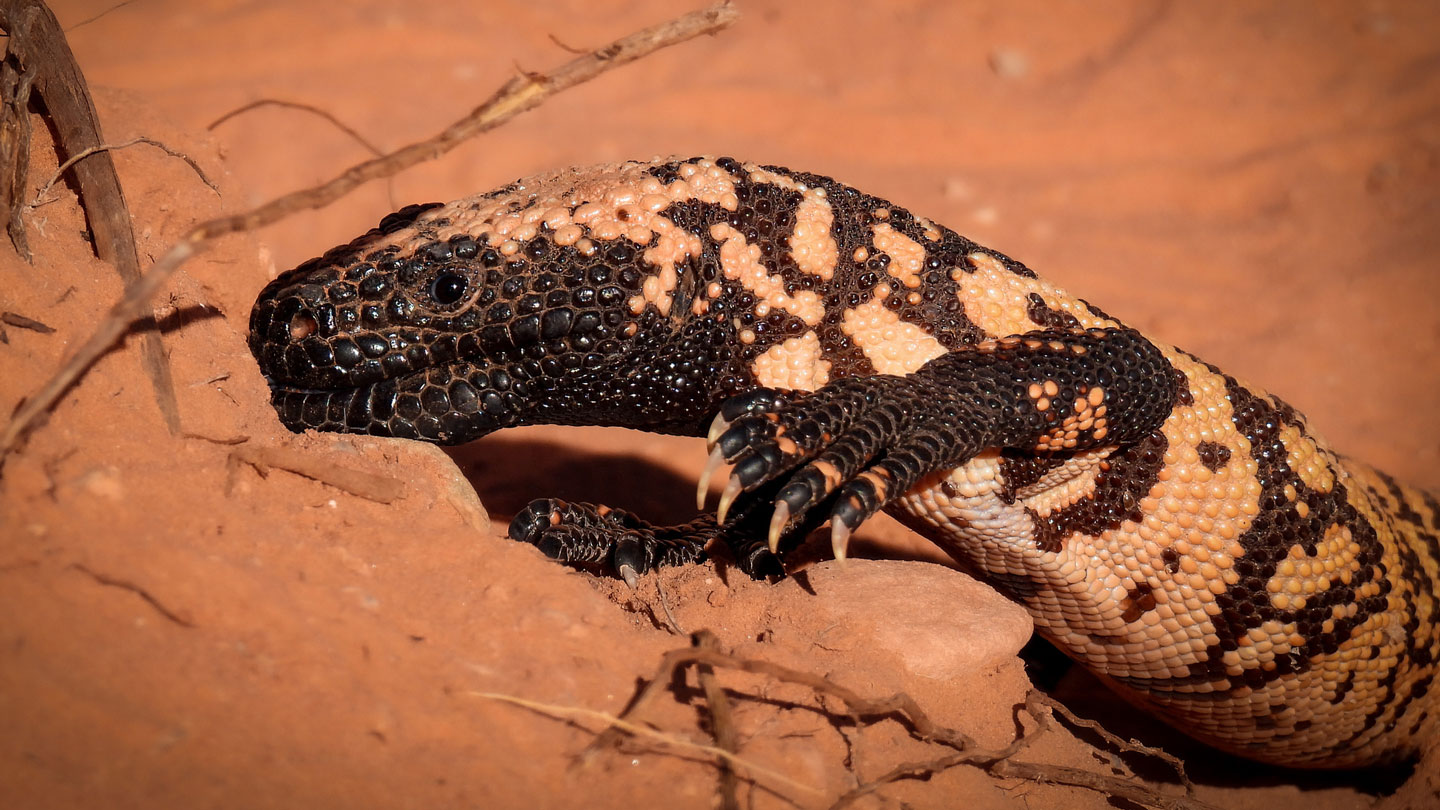Gila monsters may struggle to survive climate change

For Gila monsters that live in the warming Mojave Desert, relocating to beat the heat may not be so simple. While climate change might create some better habitats, the lizards could be left behind in regions that become harder to tolerate, researchers report in the March Ecology and Evolution.
Gila monsters (Heloderma suspectum) are icons of North America’s deserts. These chunky, black and pink-orange reptiles are among the world’s few venomous lizards. Research on their venom has been crucial for diabetes drug development, thanks to a venom compound’s similarity to human hormones that are released after eating.
But Gila monsters are secretive, spending little time dawdling in the open. Because of this, their habitat needs, especially in the Mojave Desert, are poorly understood. Steve Hromada, a conservation biologist now at the Fresno Chaffee Zoo in California, and his colleagues wanted to explore how future climate change might impact these lizards.
Five years ago, Hromada — then at the University of Nevada in Reno — and his team compiled existing Gila monster observation records from Nevada, Utah, California and Arizona. They compared these records to climate and landscape features to identify suitable habitats across the Mojave. Using climate change forecasts, the team ran computer simulations to predict how this habitat map might change in the coming decades.
Under lower emissions scenarios, the team found, not much changes for the Gila monsters. But under higher emissions scenarios, large swaths of the desert ideal for the lizards could vanish by 2082, resulting in a loss of over a third of today’s suitable territory.
While Gila monsters live in exceptionally hot ecosystems, they prefer relatively cooler temperatures within their desert habitat, says Kris Wild, an ecophysiologist at the University of Melbourne in Australia who was not involved with the research. The lizards modify their behavior to avoid the worst heat, spending time in burrows or switching to a nocturnal schedule. The researchers found that many lower elevation areas would become too harsh for the Gila monsters.
Conversely, some areas in the mountains might become more hospitable for Gila monsters. But Hromada notes that little is known about the lizards’ ability to relocate within the desert. To address this, the researchers integrated their data on Gila monsters’ movements — drawn from three datasets tracking 62 individuals via radio transmitters — into their simulations.
The team found that Gila monsters struggle to move through rugged terrain and areas with low vegetation cover. But the main barrier to accessing new habitats is the length of the trip itself. Gila monsters tend to stick close to home ranges and seem to rarely take excursions on the scale of kilometers.
“We’re not likely to see dispersals and establishment of populations in those [new] areas just because they’re too far from where populations currently are,” Hromada says. “It suggests that those high emission scenarios could be particularly dire for the species.”
Wild warns that current habitat pockets may shrink and become more isolated in the future. “These are probably going to be strongholds in important areas that are going to protect these animals with the changing climate,” he says.
Even in areas projected to be relatively ideal for Gila monsters, other factors must be considered.
“Some habitats will get better suited for the animals,” Wild says. But the simulations flag promising habitats based on climate and other environmental variables. They don’t consider development or other changes humans have made or will make to a landscape that might make it less suitable by 2082, says Wild. “Climate change is going to be tricky. There are no one-size-fits-all rules.”
Food availability in future habitats is also important. Gila monsters primarily prey on the young and eggs of other desert species. Although the simulations suggest some locations may become suitable Heloderma havens, it’s unknown how their prey resources will fare.
“Say it’s a drought year,” Hromada says. “How many rabbits still reproduce? How many quail still reproduce? Is that enough food for the Gila monster to reproduce?”
The researchers calculate that over 90 percent of current and future Gila monster habitat in the Mojave falls within public lands, most of which have some kind of protected status at the federal, state or local level.
“Maintaining those protected statuses — whether that’s the national parks or the national conservation areas around these areas — can be really important for keeping the species on the landscape,” Hromada says.
Source link

